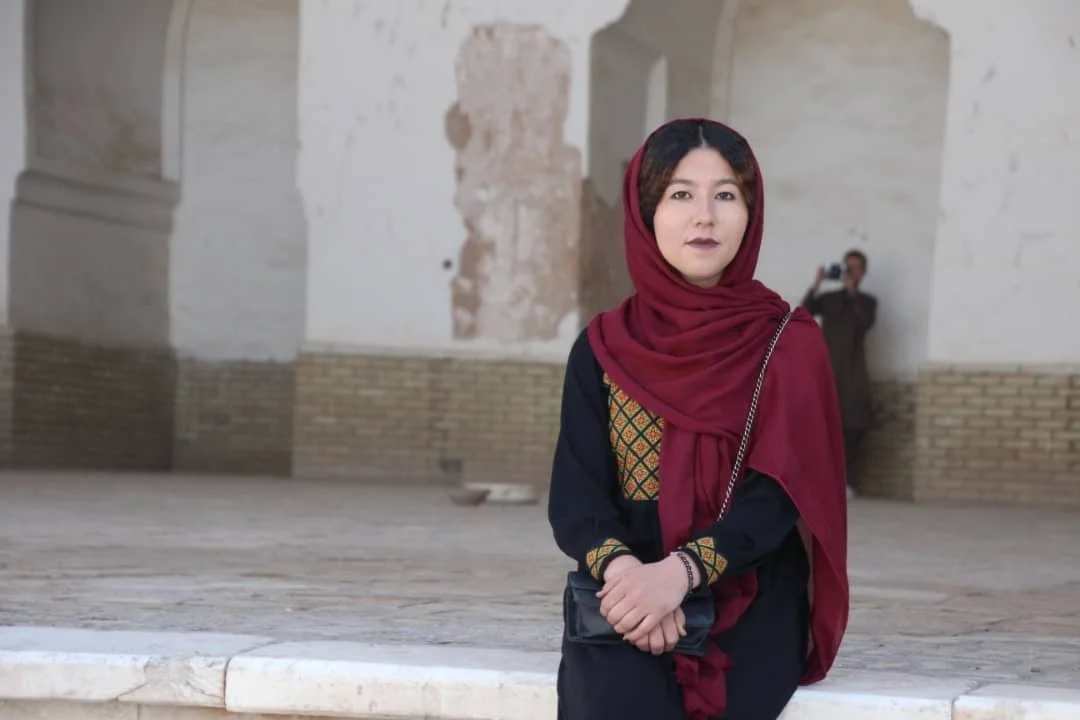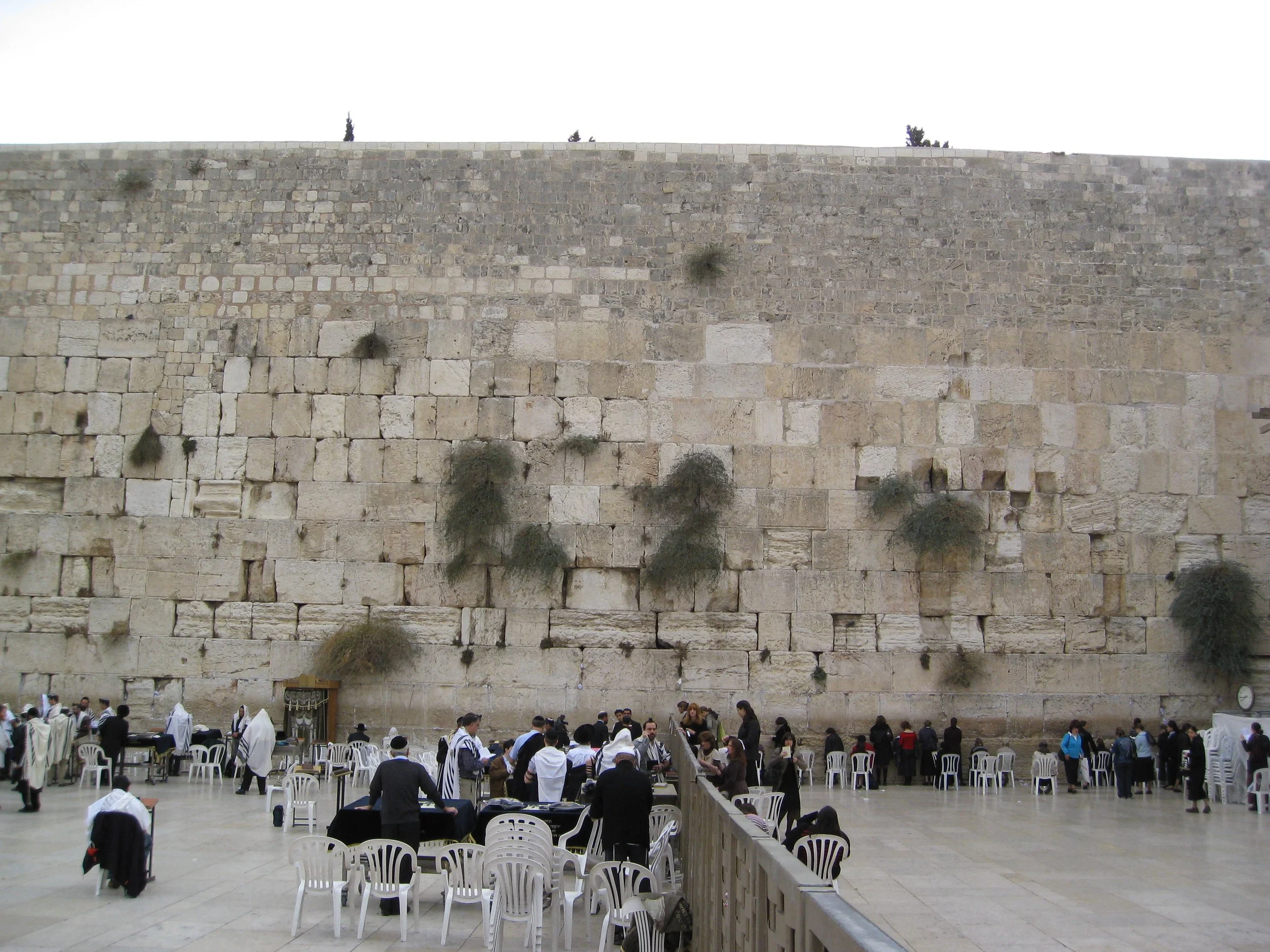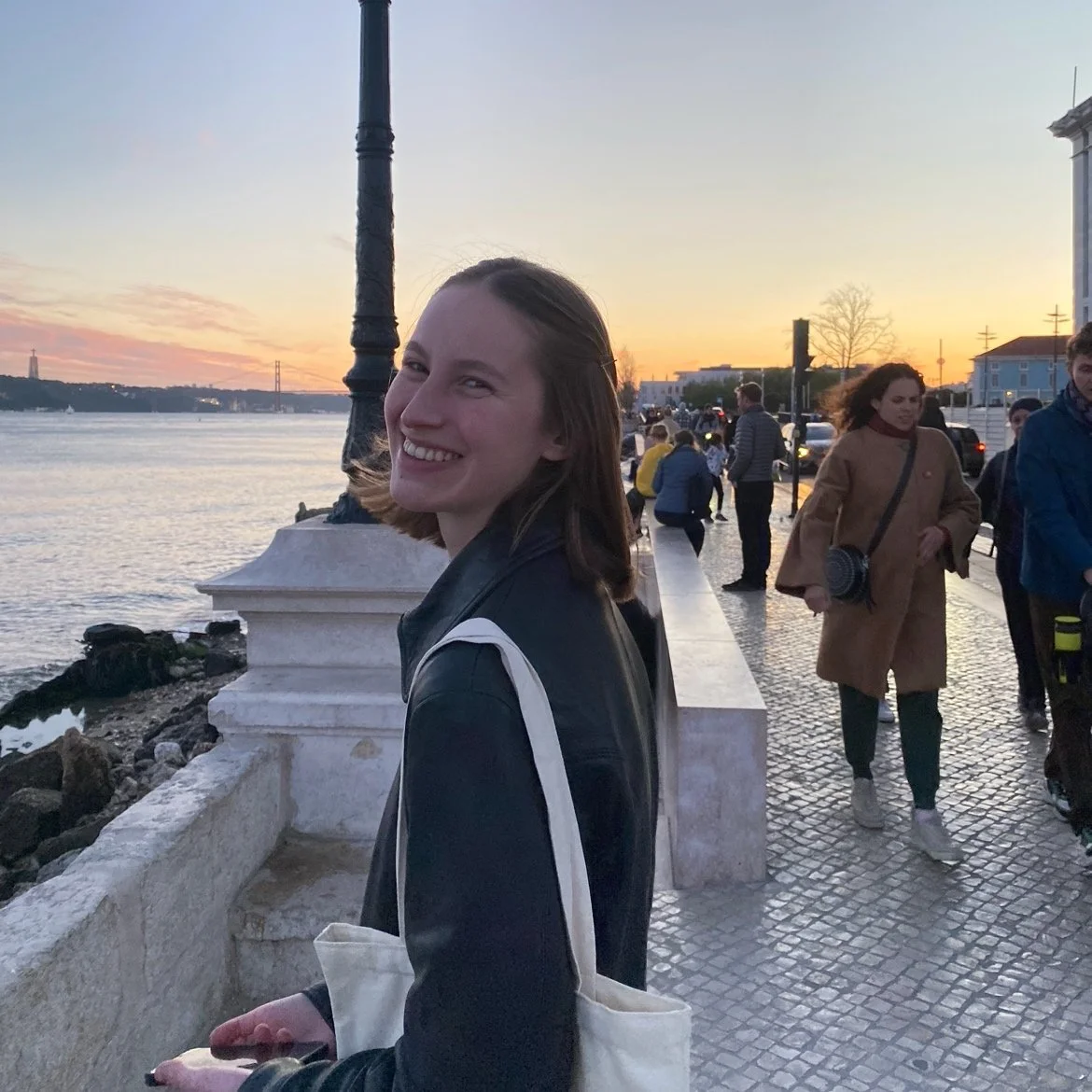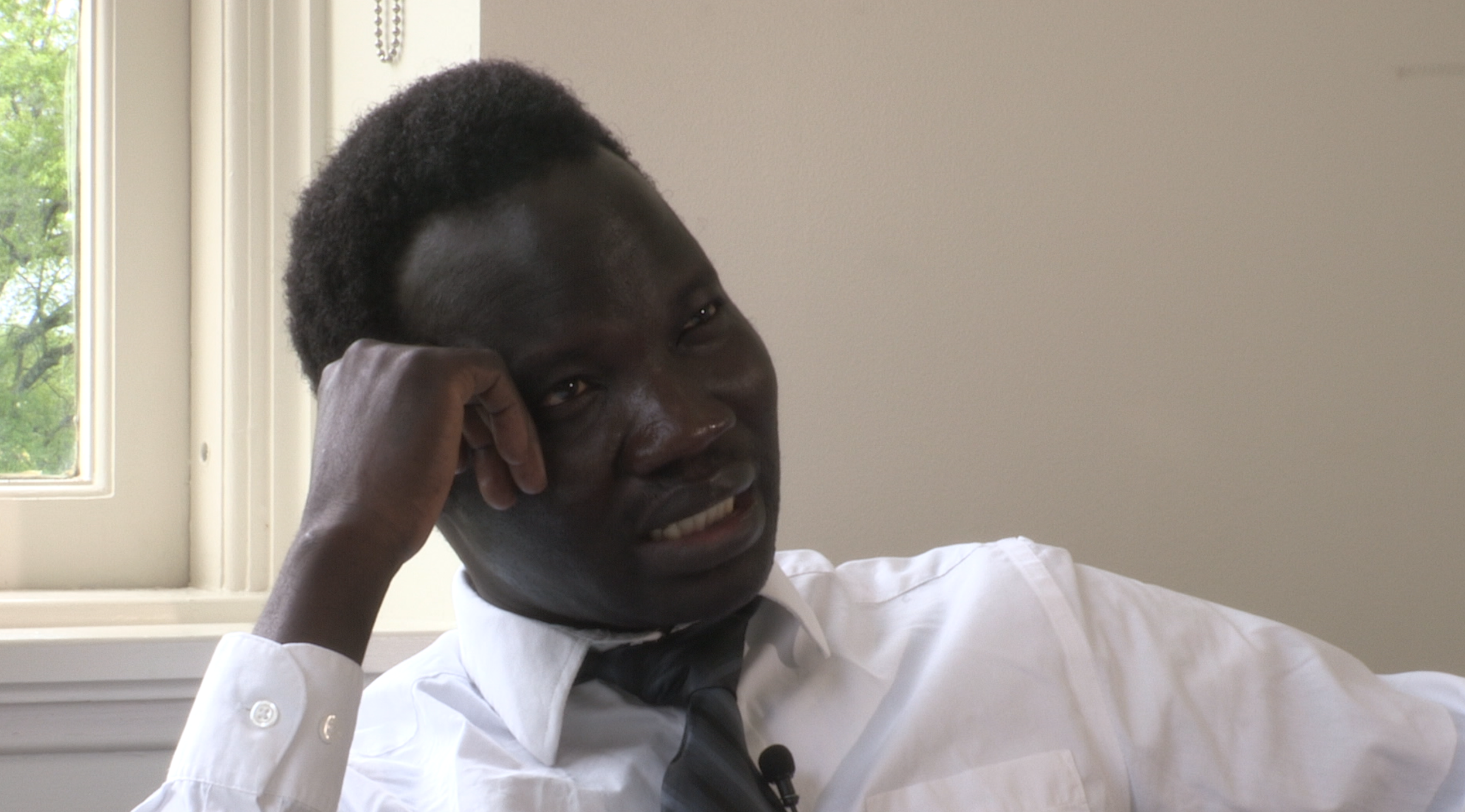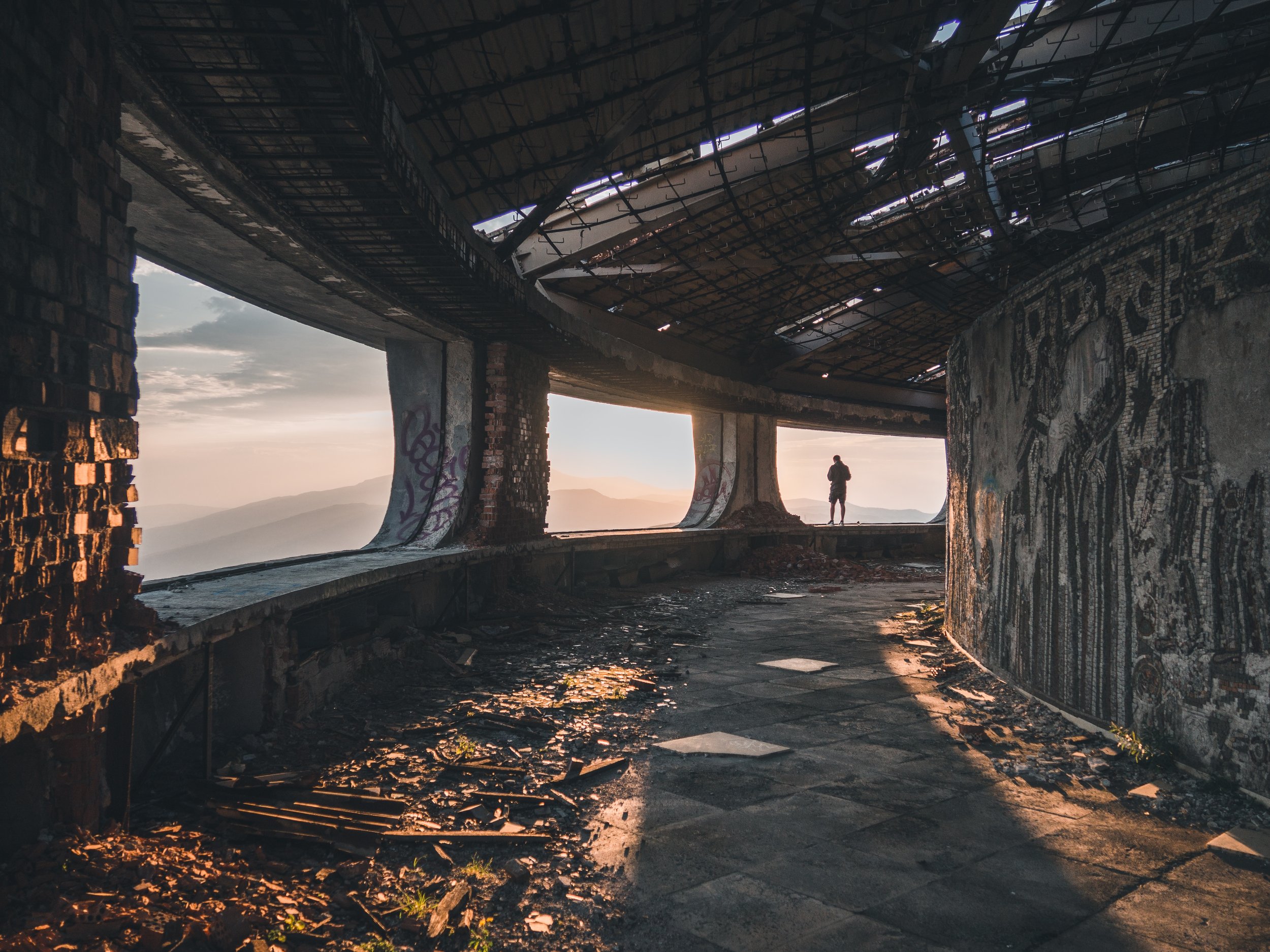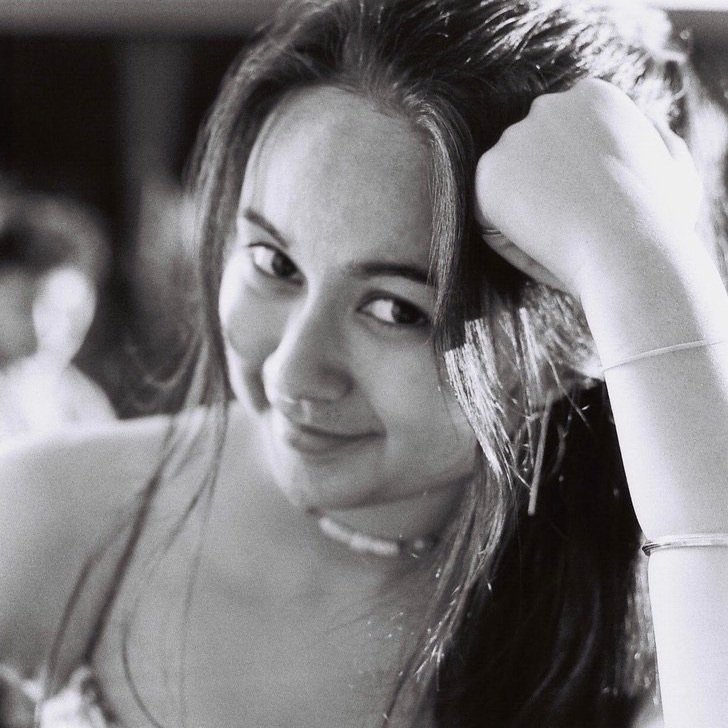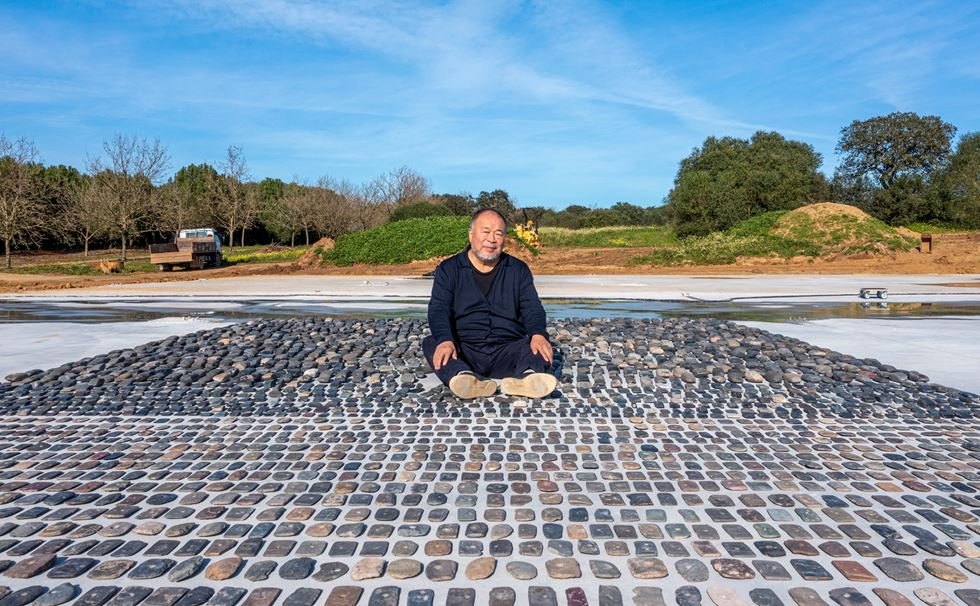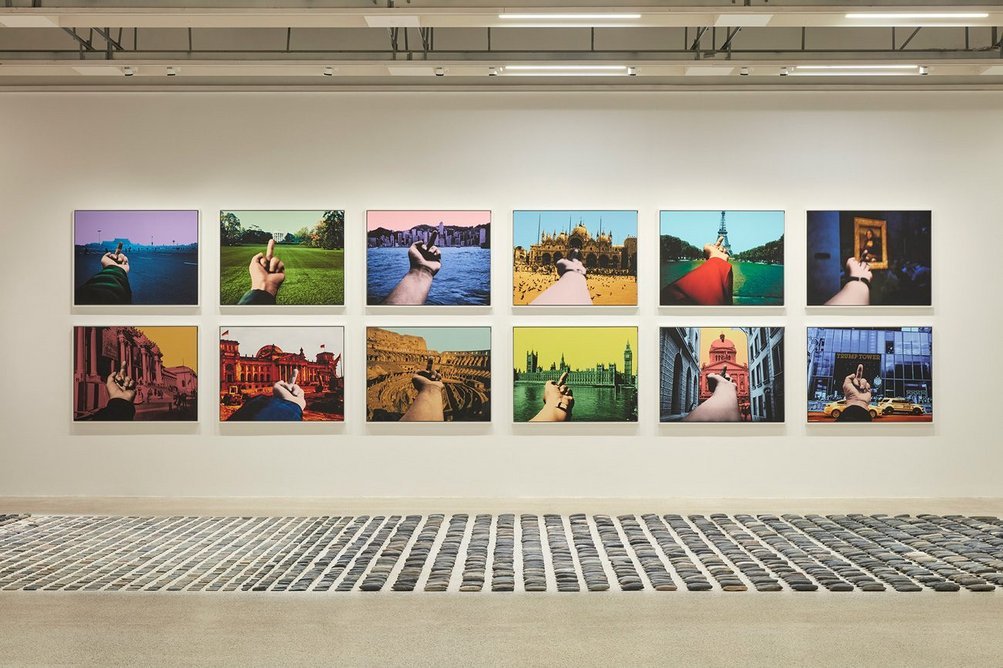Afghanistan’s Only Female Tour Guide Hosts Virtual Tours
This is the story of 24-year-old Fatima Haidari’s love and dedication to her country — from 3,000 miles away.
Bamyan Province, Afghanistan. Untamed Borders.
Meet Fatima Haidari: a 24-year-old guide who offers virtual tours of her country, Afghanistan. Forced to flee by the Taliban, Fatima now resides in Milan, Italy and provides a detailed tourist experience through Zoom of the Afghan city of Herat — taking visitors through sites such as the Citadel and the Central Blue Mosque.
Before the Taliban seized power in August 2021, Fatima worked as a local tour guide in Herat, using the job as a means to pay for her education, where she studied journalism and mass communication at university. Fatima is also the first ever female tour guide in Afghanistan, recognized in headlines in 2020. While she is no longer able to offer those in-person tours of her homeland, she continues to do what she can to show Herat off to the world — not just because the city is a beautiful and interesting place to explore, but because she doesn’t want outsiders to associate Afghanistan only with war and terror. Rather, its culture and history are what matter to her, and should take center stage.
But her passion and love for her country isn’t the only place Fatima’s heart lies. Growing up in the mountains in the central region of Ghor, Fatima was the youngest of seven children and was denied a rightful education, because she was a woman and because her family lacked the money. She worked for three years, making items such as traditional clothes to earn her way into an education, and was finally able to convince her parents to allow her to go to university in Herat in 2019, where she studied journalism.
Fatima in Herat. Untamed Borders.
Through years of hard work, Fatima was able to get an education. But many girls back home in Afghanistan do not have the same privilege. Considered one of the lucky ones to have fled, Fatima will use a portion of the money she earns from the Afghan virtual tours to donate to a women's education charity, which currently operates in Afghanistan.
Fatima partners with Untamed Borders — a travel operator dedicated to taking groups to some of the most interesting and inaccessible places — to make these virtual tours possible. The approximately 1.5 hour tour will take guests to see the 1,400-year-old Great Mosque, the Herat Citadel and through the city’s bazaars and traditional teahouses, while Fatima narrates stories about Afghanistan that focus on its people, culture and extensive history.
But this event is a milestone itself. There has never been a virtual tour of Herat, and as Afghanistan’s first-ever female tour guide, this is a groundbreaking step to inspire other women in the nation. As Fatima says, she wants to be a changer, not a victim.
Fatima leading a virtual group tour. Untamed Borders.
And, of course, there can be no frank and open discussion about the people of Afghanistan without mentioning its women. Not only are they denied an education, Fatima has said the reascendant Taliban forces women to marry and perpetrates sexual or physical abuse against them. Things are more expensive for women, even though they are losing their jobs and forced to become housewives. By shining a light on the current situation in Afghanistan, Fatima is able to talk about her homeland while also spreading awareness to those able to make a difference.
Fatima’s next virtual tour will take place on September 12. Guests are able to book through Untamed Borders, and tickets will cost $60.
Through her own personal experiences and ties to a country seized by tyranny, Fatima hopes to share what makes Afghanistan so distinct and worthy of exploration while also fighting for justice, so that the women there will grow up knowing what it’s like to go to school.
Michelle Tian
Michelle is a senior at Boston University, majoring in journalism and minoring in philosophy. Her parents are first-generation immigrants from China, so her love for different cultures and traveling came naturally at a young age. After graduation, she hopes to continue sharing important messages through her work.
The Ethics of Visiting the Galapagos
How visiting the Galapagos contributes to their destruction.
Read MoreWomen at the Western Wall
This organization is working to break down traditional gender barriers to create a communal space for women and men to pray together at Jerusalem’s Western Wall.
The Western Wall Chris Yunker. CC BY 2.0
Located in Jerusalem’s ancient Old City, the Western Wall marks a central point of religious and spiritual life for millions of Jews, Christians, and Muslims across the world. The wall is believed to mark the only remaining structure of the Temple Mount, the place of the original Temples for the Jewish people, the first of which was destroyed by the Babylonians in 586 BCE and the Second Temple by the Romans in 70 CE.
The Western Wall is also referred to as the Kotel, which is just the Hebrew word for “wall,” and as the Wailing Wall in reference to the manner in which the Jewish people wept at the site during the Roman domination of the Levant. The Wall remains a pivotal place of Jewish history and religious life, with thousands visiting the site daily and leaving prayer notes in the stone crevices.
However, in recent years, the Western Wall has also been at the center of religious debates concerning traditional gender separation. For generations, men and women have visited and prayed at the Western Wall in separate sections, the measures of which are not equal. Stretching just 12 meters in width, the women’s section 36 meters short of-the male side.
Women of the Wall
Woman praying at the Wall. it is elisa. CC BY-NC-ND 2.0
An organization called Women of the Wall (WOW) is working to increase women’s rights and equality at the Western Wall. The organization’s first meeting occurred in 1988, with 70 Jewish women gathering at the Western Wall to join together in prayer and the Torah reading, where they were met with stark disapproval and verbal assaults from Orthodox Jewish men and women. The event led to WOW’s founding and beginning of its legal fight to empower women to pray at the Western Wall, going against Orthodox norms.
By drawing on systems of social advocacy, education and empowerment WOW is seeking social and legal acceptance of women’s right to wear prayer shawls and to pray and read aloud from the Torah. The group’s mission advocates for women’s right with regards to the four t’s: the right to say a prayer, or Tefillah, the right to wear traditional leather wraps, or Tefillin, that are inscribed with verses from the Torah, the right to wear prayer shawls known as Tallit, and finally the right to read aloud from the Torah.
Along with its advocacy work, WOW regularly gathers together in community at the Western Wall. The group commemorates Rosh Chodesh, a Jewish holiday that marks the new moon at the beginning of each month in the Hebrew calendar, with a collective morning prayer at the Kotel. The holiday is traditionally connected to a celebration of women, with origins dating back to the time of Moses when wives refused to give up their jewelry to build the golden calf, a symbol of sin and idolatry in the Torah.
While these monthly prayer gatherings are a means of celebrating Jewish women’s spiritual life and collective community, they are often met with violence and aggression. The women of WOW are often double searched at the entrance to ensure that they are not smuggling in a Torah, and the group regularly face physical and verbal aggression from the Ultra Orthodox community, an experience that often leaves them with scars and bruises after their day of prayer.
Members of WOW are accustomed to receiving verbal and physical pushback against their cause, and even being spit on by those who view their message as sacrilegious.
A Legal Battle
In 1988 the Ministry of Religion established The Western Wall Foundation, a government body responsible for the care and administration of the Western Wall. Rabbi Shmuel Rabinovitch has served as chairman of the foundation since 1995 and has been known for his efforts to maintain traditional Orthodox customs at the Wall. Rabbi Rabinowitz has criticized WOW’s work in the past, including in 2014 when he spoke out against activists efforts to smuggle a Torah into the women’s section of the Wall.
In spite of women’s legal right to read the Torah, Rabbi Rabinovitch has created regulations that prevent women from bringing in Torahs into the Plaza. Furthermore, Rabbi Rabinovitch’s regulations prevent women from borrowing one of the 200 Torah scrolls kept within the Plaza, which are freely offered to men.
In April 2013, a decision written by Judge Moshe Sobell in the case of Israel Police v. Lesley Sachs, Bonnie Riva Ras, Sylvie Rozenbaum, R. Valerie Stessin, & Sharona Kramer, found that the Israeli Supreme Court’s 2003 case which prohibited women from wearing prayer shawls or reading from the Torah had been misinterpreted, and could not be applied to WOW. Judge Sobell also found that WOW had not endangered the public peace, nor had it violated the Law of Holy Places governing the Western Wall that demands visitors adhere to the local customs. Instead, the ruling dictated that local customs should be determined by the public through nationalistic and pluralistic lenses in addition to the Orthodox one.
The 2013 court decision helped spur ongoing discussions regarding communal prayer spaces at the Wall. In 2013, Prime Minister Benjamin Netanyahu appointed a committee chaired by Natan Sharansky to resolve the issue of communal prayer at the Wall. Sharansky proposed to extend the Western Wall plaza to an area known as Robinson’s Arch in order to provide a pluralistic prayer space for both men and women. The area can accommodate some 450 people, and was seen in many ways as a temporary solution to the question of mixed-gendered prayer.
In January 2016, the Israeli government approved a plan to set up a communal space in which both men and women could pray together. The plan will also give women who want to pray alone but not in accordance with Orthodox rules the option to set up a temporary barrier.
The new area is expected to double the size of the temporary communal prayer area set up in 2013 under Netanyahu, in order to accommodate 1,200 worshippers.
The fight for communal prayer spaces remains a contentious issue between Orthodox and Reformed communities. Although the plan for a pluralistic prayer space was passed by the Knesset, Israel’s legislature, in 2016, as of 2023 the construction and implementation have not yet begun. The issue remains a top priority for members of WOW, who will continue to pray at the Wall’s women’s section until a pluralistic prayer space is constructed.
Get Involved
Other organizations in Israel have come out in support of WOW and embraced a pluralistic perspective towards religious traditions.
Rabbi Danny Rich, a chief executive of Liberal Judaism, celebrated the decision for a communal prayer space as one that represented Judaism’s inclusivity. Through education opportunities, social action campaigns, collaborative interfaith work, and its provision of programming and library of historical archives, Liberal Judaism engages with social justice issues such as climate change, inequality, and poverty.
The Israel Movement for Reform and Progressive Judaism has also praised the women’s representation at the Western Wall, as an exemplification of pluralism and diversity within Jewish community. The Movement seeks to increase the accessibility of progressive and pluralistic Judaism through education programming as well as legislation changes as part of their Israel Religious Action Center (IRAC). Along with their advocacy work, the IRAC offers resources and publications that engage with modern social issues through a progressive and religious lens.
Jessica Blatt
Jessica Blatt graduated from Barnard College with a degree in English. Along with journalism, she is passionate about creative writing and storytelling that inspires readers to engage with the world around them. She hopes to share her love for travel and learning about new cultures through her work.
An Ethiopian’s Path to From Refugee Camp to College Campus
How a refugee survived genocide and rebuilt a life in the United States.
Omot retelling his journey coming to the U.S. during our interview. Image courtesy of Ojullu Omit.
This semester, I had the privilege of connecting with Ojullu Omot, whose life was forever altered by tragedy. On December 13, 2003, when he was just 14 years old, Omot experienced a massacre at his hometown in south-west Ethiopia. As part of a Wake Forest University project to raise awareness about the challenges faced by refugees, a team made up of me and my classmates produced a 10-minute advocacy film that aims to shed light on the often-overlooked struggles refugees encounter while adapting to life in the United States. Omot’s story is a testament to the blend of heartbreak and perseverance that characterizes the ongoing global refugee crisis, capturing the resilience and fortitude of those seeking haven away from home.
Omot’s story began with displacement, as he fled the 2003 massacre in the remote Gambella region of southwestern Ethiopia. From December 13-15, in a reprisal against a small ambush against Ethiopian federal government officials, ethnically Amhara, Oromo, and Tigrayan soldiers and rioters murdered hundreds of minority Anuak civilians. Human Rights Watch’s report suggests that these atrocities should be considered crimes against humanity. . The Ethiopian government claimed that only 57 were killed and that the violence resulted from ethnic tensions between rival Anuak and Nuer groups, in contrast to the claims of international human rights groups and the Anuak themselves. Human rights NGOs have called for a thorough investigation into the incident, with concerns that others like it could occur. Despite facing deadly tragedy along with the immense challenges of settling into a new society as a refugee, Omot has found a new home in the United States, where he serves as a living witness to the egregious human rights abuses of his homeland. He remains committed to starting a new chapter in life.
By now Omot has gotten used to retelling the story of how he left his home in Ethiopia in the midst of genocidal violence, and his journey from there to become an international politics student in the United States. The three-day-long massacre in Gambella town of southwestern Ethiopia was an outburst of ethnic conflict between the indigenous Anuak group and members of the Ethiopian military. As the situation in Ethiopia deteriorated, Omot moved to Sudan when he was a teenager, with the hope that things would get better in a year or two.
But they didn’t. The military confrontation neither started, nor ended with the massacre. More than 10,000 Anuak people were forced to leave Ethiopia in 2004, the year after the massacre took place.
Omot left Sudan for Kenya after two years of waiting. The unrest had separated him from his family, and he lacked many colorful memories about his childhood in Ethiopia, Sudan and Kenya. What he remembered is playing football with his friends in refugee camps everyday; many of those eventually being sent to Canada, Australia and other developed nations. Omot remembers planes from the United Nation hovered above their heads in refugee camps, dropping food and supplies and people hurrying to grab them. “We were dependent on the refugee program,” Omot said, “Resettlement in the United States was not a typical solution for refugees living in the United Nations High Commissioner for Refugees(UNHCR) camp.”
Omot never dreamed about coming to the United States then. He was invested in the idea that everything will go back to normal in Ethiopia, and that he could then return home. Yet Omot’s life took a major turn in the year 2016. He was called for an interview, which he later found out was part of the application process by U.S. Citizenship and Immigration Services employees concerning whether he is eligible for resettlement in the United States as a refugee. The approval rate for a refugee status in the United States is 27%, according to World Data.
Omot waited for roughly six months until he was called for a series of security checks, examinations and orientation. In February 2016, International Organization for Migration contacted Omot, telling him that his case is ready. He then boarded a plane to the United States on April 4th, 2016, his first ever flight. When he landed in Miami, Florida, it was like landing on a new planet- the shock of the novel language and lifestyle almost dazzled the then 28 year old.
“There was something change, [such as] the day became longer, I was not even comfortable, and I cannot see where I come from, ” Omot recalled his initial exposure to the United States, “The first question I asked myself [was], is this the U.S. [as] I expected it?”
And the first few months continued to affirm to him that starting anew wasn’t easy. Omot often found himself alone in his house assigned by the government, since his roommates busied themselves working in the daytime, and went straight to sleep not long after walking in the door at night. Comparing the situation to the community life in Ethiopia, where everyone would sit down and share stories after a day’s work, filled Omot with homesickness at night.
Language is also a major challenge to Omot. Going to a university was at the top of his wish list when he came to the United States, but he couldn’t even understand people’s accents when he asked for directions on his way to school. He had no idea how to open emails during his first semester at a community college. When one of his classmates finally taught him how to view the inbox, he found emails from professors flooded in there. In winter, the temperature dropped so low that Omot, who used to live near the equator, had to drop his English as Second language (ESL) classes to avoid traveling in freezing weather.
But Omot is determined to realize his dream. Instead of “wasting time” in ESL classes, he decided to push himself, taking the General Educational Development (GED) tests directly. He works as a hospital janitor in the daytime for living; in the evening and before dawn, he dives into his study. Whenever he had free time, Omot would peruse his textbooks, went up to the library of the community college he attended everyday, asking every librarian what GED looks like, and tips and tricks to score higher.
The global refugee population has reached crisis proportions, with more than 30 million refugees displaced in 2022, signaling a significant surge from the previous year's level. The United Nations High Commissioner for Refugees (UNHCR) has reported a staggering total of 103 million people forcibly displaced as of mid-2022. In response, President Joe Biden has committed to revamping America’s current “inhumane” immigration policy. However, the administration's effort to admit refugees has fallen significantly short of its goal, with only 25,465 individuals granted admission by the end of the previous fiscal year on September 30, 2022, a mere 20% of the objective. The number of refugees received by the United States still remains one of the lowest among all nations, and the number continues to decrease.
Refugees face a plethora of challenges when they resettle in a foreign country, with attaining secure housing among the most pressing. Asylum seekers in particular struggle to obtain temporary housing due to a lack of government support and unfamiliarity with the US housing system. Non-profit organizations and shelters provide vital assistance to these individuals. Despite this aid, refugee and asylum seekers are disproportionately at risk for health problems, both physical and mental. They are more susceptible to severe mental health conditions like PTSD and depression, while chronic illnesses like diabetes, hypertension, and cardiovascular disease exacerbate their already challenging circumstances.
In 2017, Omot took the GED for the first time. And hard work pays off — he passed the test.
“It [passing the test] gives me hope that I could continue to do all of them,” said Omot, breaking into a smile. And he did. After he finished with GED, Omot is currently pursuing a bachelor degree in international politics at University of North Carolina Greensboro. When asked why he could recall his story in astonishingly clear detail, Omot answered, “I think my story is important because if other people, other refugees heard about it, they would think, oh, this guy did that and starting his new life. Maybe I could do the same.”
To Get Involved:
While Omot is navigating through his new life in the United States, it is not without support from various refugee organizations, such as Every Campus a Refugee (ECAR), an organization aiming to mobilize colleges and universities to host refugees on campus grounds and support them in their resettlement. ECAR provided nearly 4 years free housing and accessories to Omot, and provides several other services to refugees in the North Carolina region. Learn more about ECAR here.
Hope Zhu
Hope is a Chinese international student at Wake Forest University in North Carolina studying sociology, statistics, and journalism. She dreams of traveling around the globe as a freelance reporter while touching on a wide range of social issues from education inequality to cultural diversity. Passionate about environmental issues and learning about other cultures, she is eager to explore the globe. In her free time, she enjoys cooking Asian cuisine, reading, and theater.
Thrill-Seekers Turned Activists: How Urban Explorers Reshape Our Cities
Dive headfirst into the vibrant and rebellious world of urban exploration.
An abandoned building in Dallas, TX, USA. CC0 Photo by Jamison Riley
A clandestine movement has taken root in the heart of the concrete jungle, where towering skyscrapers cast long shadows and the city’s pulse beats relentlessly. Urban explorers, audacious pioneers of the metropolitan underworld, have transcended the realm of mere thrill-seeking to become a force of exploration and social change. With a fervor matched only by their insatiable curiosity, these modern-day adventurers navigate our cities’ forgotten nooks and crannies, unearthing hidden stories and breathing life into the abandoned.
Venturing beyond the metropolis’s surface, urban explorers are more than mere adrenaline junkies. They don headlamps and sturdy boots, equipped not only with a passion for the forbidden and abandoned but also a profound desire to expose the secrets that lie dormant, just out of view. These intrepid souls are the custodians of forgotten spaces, the keepers of memories that time and progress threaten to erase. But what sets many of these thrill seekers apart is their mission to harness these spaces to advocate for change and ignite the fires of awareness.
Exploring an abandoned building in Buzludzha, Bulgaria. Photo by Natalya Letunova.
In urban exploration, unearthing hidden gems is an art form. With meticulous research, cunning and bit of audacity, explorers infiltrate abandoned factories, derelict warehouses, and silent asylums that once teemed with life. Their discoveries often yield fascinating historical tidbits that lurk in the shadows of our urban landscapes, waiting to be rediscovered.
Did you know that beneath the bustling streets of New York City, a hidden network of tunnels snakes its way, unseen by the masses above? These forgotten catacombs were once arteries of the city's subway system, now frozen in time. Urban explorers, torches in hand, venture into this subterranean labyrinth, weaving through tracks forgotten by the city above. Through their daring expeditions, they expose the forgotten arteries of the past, awakening a collective sense of awe and inspiring us to question the evolution of our cities.
Catacombs of Paris. 1ivia CC BY 2.0
One early example comes from the Catacombs of Paris, a vast underground ossuary housing the remains of millions of people. In the late 18th century, the catacombs were initially explored by a group of quarry workers; subsequent ventures by early urban explorers brought attention to a massive hidden underworld. Their expeditions and documentation highlighted the historical and cultural significance of the catacombs, which were at risk of being forgotten and destroyed. Their efforts led to the catacombs being officially opened to the public in 1809, ensuring their preservation and creating a unique tourist attraction that continues to this day.
The Spreepark Ferris wheel is overgrown with vines. Björn O. CC BY-ND 2.0
Similarly, a remarkable instance of urban exploration leading to tangible change can be found in the case of Berlin's iconic Spreepark. Once a bustling amusement park in East Germany, it fell into disrepair after the fall of the Berlin Wall. Urban explorers were among the first to return to its abandoned rides and dilapidated structures. Their documentation and artistic endeavors drew attention to the park's unique history and architectural significance. This, in turn, sparked public interest and led to grassroots movements advocating for its preservation. Eventually, the city recognized the cultural value of Spreepark, and it is now being renovated and revitalized as a cultural hub and public space, thanks in part to the efforts of urban explorers.
Today, urban explorers, armed with cameras and a flair for the arts, transform abandoned spaces into living, breathing works of art. With strokes of creativity, they paint vivid pictures of urban decay, capturing the beauty in the broken and turning dilapidated factories into canvases that scream for attention. By juxtaposing the modern world with the remnants of the past, they challenge the status quo and force us to confront the transient nature of our surroundings.
In fact, urban exploration has played a crucial role in shedding light on neglected neighborhoods and highlighting social issues. In the 1960s and 1970s, urban explorers in New York City, known then as "street historians," ventured into abandoned buildings and derelict neighborhoods. Their photographs and documentation exposed the city's neglect of these areas and the struggles faced by marginalized communities. Their work drew attention to urban decay, inequality, and the urgent need for urban revitalization. This activism paved the way for grassroots movements, policy changes, and community involvement in transforming neglected neighborhoods into vibrant, inclusive spaces.
Le Petite Ceinture. Photo by Florian Olivo.
Beyond artistic endeavors, urban exploration is rooted in a more profound purpose – preserving cultural heritage and pursuing environmental consciousness. Many urban spelunkers strive to save architectural relics from the clutches of demolition, advocating for the conservation of our shared history. By documenting these forgotten spaces and shedding light on their plight, they ignite a collective sense of responsibility, prompting us to question the blind march of progress and contemplate alternative paths for urban development.
Take, for instance, the case of the Centralia Mine Fire in Pennsylvania, USA. This underground coal mine fire has been burning since 1962, releasing toxic gasses and pollutants into the air and soil. Urban explorers, recognizing the environmental impact and danger posed by the fire, have documented its effects and brought attention to the ongoing issue. By sharing their findings and raising awareness, they have contributed to the push for environmental remediation and the implementation of measures to mitigate the harmful effects of the fire on the surrounding ecosystem.
Similarly, urban explorers have also played a crucial role in exposing and advocating for the cleanup of contaminated industrial sites, such as abandoned factories and chemical plants. Their explorations and documentation draw attention to these neglected spaces’ potential hazards and environmental risks. By highlighting the presence of pollutants, hazardous materials, and the need for cleanup, they contribute to the dialogue surrounding environmental conservation and encourage responsible remediation efforts.
Once relegated to the fringes of society, urban exploration has evolved into a powerful movement and is even the focus of several social media accounts like Decaying Midwest and Martin Horton who explores South Yorkshire. In the footsteps of these fearless adventurers, a new narrative of urban development is being written. They challenge the status quo, champion the forgotten, and reawaken our senses to the untapped potential of our cities. As modern-day explorers, they continue to rewrite the story of our cities, one forgotten space at a time, bridging the gap between past and present.
Raeann Mason
Raeann is an accomplished traveler, digital storyteller, and guide writer with a degree in Mass Communication & Media. Her work as the Content Manager with CATALYST focuses on reshaping travel culture to be ethically sound and sustainable, while promoting social and environmental reform through cultural exchange. With over a decade of experience crafting unforgettable adventures, she creates and reports on experiences that leave a lasting impact.
Indigenous Fashion is Redefining the Runway
The ‘I’ in BIPOC has remained largely absent in the fashion industry, until now.
Models pose at Vancouver Indigenous Fashion Week. Vogue. CC BY-SA 2.0.
Once restricted to the top floor ateliers and hidden workshops of century-old brands, the world of high fashion is increasingly public. As a trillion dollar industry, one would expect fashion to have more than enough space for designers from all backgrounds to create and show their art, but as is the case, the market remains dominated by a handful of ancient European and American household names. More recently, designers of color have begun to break onto the haute couture scene as the Council of Fashion Designers of America (CFDA), among other notable fashion institutions across the world have made a strong effort to increase the visibility of BIPOC designers. The one minority notably absent, however, are Indigenous designers whose designs and culture have been repeatedly appropriated for years by brands such as Victoria Secret, Caroline Herrera, and Loewe, among others.
The First Nations Fashion and Design runway show in 2021 only included First Nations models. Stefan Gosatti. CC BY-SA 2.0
While the American fashion scene is notably lacking an Indigenous presence, Canada and Australia both hold annual Fashion Week events solely dedicated to showcasing Indigenous designers and models. In fact, the latter received a lot of positive attention in 2021 for local brand First Nations Fashion and Design’s runway show, which consisted entirely of First Nations models wearing First Nations-made garments. The show included a number of live musical performances and was interspersed with various homages to the claim of First Nations peoples to Australian land, none of which are common occurrences in Australia’s Fashion Week. The audience, however, absolutely loved it: creative designer Grace Lillian Lee along with her CEO and co-designer Teagan Cowlishaw walked out at the end of the show to a standing ovation. According to Cowlishaw, the show was about “the movement of giving our land back to its rightful owners,” a theme common among other runway shows and fashion collections created by First Nations designers.
South Sudanese-Australian model Adut Akech was named Model of the Year in 2018. Hot in Juba. CC BY-NC-ND 2.0
In parallel with this sudden increase in Indigenous fashion exploding onto the scene in the past few years, demand for models of First Nations heritage has also skyrocketed. This previously untapped pool of talent is finally receiving the attention it deserves, with Indigenous models appearing with increasing frequency in print ads, television commercials, and of course, on runways. Australian modeling agencies can’t seem to sign Indigenous models fast enough, which has created a space for agencies that only represent models of First Nations heritage. According to some, this shift began with the appearance of several South Sudanese-Australian models who have gone on to become internationally renowned, but were firstly instrumental in redefining Australian standards of beauty: tanned, blonde, and bikini-wearing hegemony has been pushed aside in favor of a much more diverse range of skin colors and body types. Thus began the growing presence of First Nations faces in fashion campaigns both in Australia, and now, across the world.
Designers on stage at the National Indigenous Fashion Awards Ceremony in 2022. NIFA. CC BY-NC 2.0
In order to further support the work of First Nations designers in Australia, the National Indigenous fashion Awards (NIFA) were launched in 2020 to celebrate the cultural diversity and traditions of First Nations artists and designers in fashion and textiles. The annual event presents awards in six different categories including a Community Collaboration Award and a Wearable Art Award, each of which aims to promote the ethical and sustainable production practiced by many First Nations designers, as well as highlight traditional textile manufacturing techniques. The winning designers receive monetary awards as well as educational opportunities both locally and abroad to further develop their skills. This year, the event will take place on August 9 in the Darwin region of Northern Australia, an area traditionally owned by the Larrakia people, an Aboriginal nation with a population of roughly 2,000. While nominations closed in April, anyone who visits the NIFA website when it opens again for next year will be able nominate their favorite brands and designers, from those catering exclusively to the haute couture market, to brands showcasing their wares on social media, so long as they are of Aboriginal or Torres Strait Islander heritage. In addition, NIFA is launching a new showcase tour initiative this year that will allow shortlisted nominees and winners of the 2023 awards to display their designs to the public at four convention centers across the country.
NIFA award-winner Philomena Yeatman pictured in her studio with one of her traditionally woven tapestries. NIFA. CC BY-NC 2.0
Among the past winners is 59 year old Esther Yarllarlla, an artist of the Kunibidji who has been practicing and perfecting her traditional weaving techniques for decades. The piece which won her the Traditional Adornment Award was commissioned by the Bábbarra Women’s Center — a mókko or traditional womenswear garment with an open back, but her work also includes delicately knotted bags woven from banyan tree fiber. Another expert weaver, Philomena Yeatman received the Textile Design Award in 2022 for fusing traditional palm fiber weaving techniques with modern materials to create beautiful tapestries that tell the stories of her people, the Yarrabah. By contrast, last year’s recipient of the Business Achievement Award was a First Nations-run organization called Clothing the Gaps which engages in various social action campaigns to diversify Australia’s fashion sector. Through their community of youth leaders and community advocates, the organization has built a large following both in person and on social media, and helped them to successfully reclaim the First Nations flag in a legal campaign that ended successfully in 2022.
The list goes on: each shortlisted and winning designer or artist has dedicated their lives to advancing their craft and sharing their culture with the wider Australian community. While there is undoubtedly still work to be done, the burgeoning First Nations presence in Australia’s fashion scene is setting a positive precedent for the road forward, championing appreciation instead of appropriation, and carving out a space for Indigenous designers around the world that should really have been there from the beginning. As the words splashed across the backdrop of that fateful runway show in 2021 announced, “This is not a moment. This is a movement.”
Tanaya Vohra
Tanaya is an undergraduate student pursuing a major in Public Health at the University of Chicago. She's lived in Asia, Europe and North America and wants to share her love of travel and exploring new cultures through her writing.
ART REVIEW: Ai Wei’s New Exhibit Highlights Activism and Mass Production
Not one to shy away from political statements, Chinese artist and activist Ai Weiwei’s recent exhibition questions mass production and highlights human rights tragedies around the world.
Ai sits atop “Still Life,” one of the works presented in Making Sense consisting of 1,600 tools from the late Stone Age. Ai Weiwei Studio. CC BY-NC 2.0
Internationally renowned Chinese artist Ai Weiwei is known for his ability to present political opinions and insights through artwork that relies heavily on everyday objects, and his latest exhibit is no different. Titled “Making Sense,” the exhibit, which has been on display at London’s Design Museum since April 7 and will remain there until July 30, includes a number of Ai’s decommissioned artworks as well as a handful of new pieces. This exhibit marks the first time Ai has offered commentary on the practice of design and what it means for the value society places on objects.
Ai Weiwei pictured talking to reporters outside of his studio soon after his release from detainment in 2011. Getty Images. CC BY-SA 2.0
While Ai is most widely known as an artist, he is also an internationally recognized human rights activist due to the strong political statements he makes both through his art and his speech. He has long been openly critical of the Chinese government’s stance on the democratic process and human rights, which led to a stint under house arrest in 2010. The government claimed that he had built his Shanghai studio illegally and scheduled it to be demolished, although many believed that this was simply an excuse to further crackdown on dissent.
Ai has also regularly conducted investigations into government corruption and scandals which were covered up, resulting in his arrest in April of 2011 due to “economic crimes”. He was detained for a total of 81 days without ever being charged, and upon release, was hailed as the father of modernism in China. His clashes with the Chinese government have meant that freedom of expression and free speech are central themes to a lot of his work, and he often tries to draw parallels between his experiences in China with what he sees happening in the US, Europe, and elsewhere.
Photographs from the “Study of Perspective” collection are displayed above the stone age tools. Ed Reeve. CC BY-NC-ND 2.0
In “Making Sense,” many of the works are large collections of objects both ordinary and rare, meant to probe his audience’s views on mass production and consumption, from lego bricks to stone-age tools, pottery shards to porcelain cannonballs from the Song dynasty (960 - 1279 CE). True to his activism, there are also a number of works highlighting various human rights and social justice issues, such as the poor response of the Mainland Chinese government after the Sichuan earthquake in 2008 and the ongoing refugee crisis in Southern Europe.
Among the decommissioned works in the exhibit is a collection of photographs titled “Study of Perspective,” in which only Ai’s hand is seen emerging from behind the camera, holding up his middle finger before a variety of backgrounds including the Eiffel Tower, Tiananmen Square, and the White House. Shot between 1995 and 2017, these photographs were meant to mimic those taken by tourists in front of these popular landmarks, while simultaneously presenting a sharp statement of opposition to the political institutions they represent.
A sea of donated lego bricks makes up the “Untitled (Lego Incident)” Work in the exhibit. Ed Reeve. CC BY-NC-ND 2.0
Another work, “Untitled (Lego Incident),” comprises hundreds of Lego pieces donated to Ai after Lego refused to sell him any of their products in 2014. He had been previously been using Lego bricks to create portraits of imprisoned human rights activists to display as part of his “@Large” exhibit displayed in the infamous prison on Alcatraz Island, but Lego blacklisted Ai, announcing that their products are not meant to be used for political messages. His response on social media resulted in these donations, with this exhibition the first time the Legos will be part of a formal production. This field of bricks lies in front of another Lego based artwork in which Ai has reinterpreted the famous Monet painting of water lilies, using over 650,000 individual bricks to create a wall piece which stretches for almost 50 feet (roughly 15.2 meters).
Some of the works are of a much more personal nature, such as “Left Right Studio Material,” a carpet of blue glazed pottery shards leftover from when the Chinese government raided Ai’s studio in 2018 demolishing everything they could find. At the time Ai had been experimenting with the ceramics, trying to create the largest possible sphere that would fire in his kiln without shattering. One such bubble is visible to the right of the shards, a lone survivor of the studio raid. This work is one of a handful that speak to Ai’s fascination and appreciation of artisanal Chinese craftwork, porcelain making being among many that are quickly dying out thanks to automated mass manufacturing processes.
A close-up view of the porcelain teapot shards that comprise “Spouts”. Ian Mansfield. CC BY-SA 2.0
In this vein, the two works “Untitled (Porcelain Balls)” and “Spouts” also pay homage to Chinese porcelain, the former a field of over 200,000 porcelain cannonballs from the Song Dynasty; Ai was shocked by the use of such a delicate material to make ammunition. The latter is a collection of over 250,000 porcelain spouts broken off of teapots that were not perfect enough to be sold. These massive collections have been curated by Ai himself since the 90s and aim to question how we decide what objects are worthy of value: each of the cannonballs or stone age tools could be placed in a museum given their historical significance, but Ai was able to find them for next to nothing in Chinese flea markets.
“Backpack Snake” (left) and “Life Vest Snake” (right) adorn the back wall of the exhibit. Ed Reeve. CC BY-NC-ND 2.0
Conversely, the two winding snakes on the back wall of the exhibit are dedicated to the victims of the Sichuan earthquake in 2008 and the refugees who lost their lives making the journey to Europe from Syria. Titled “Backpack Snake” and “Life Vest Snake” respectively, each work uses items the artist found at the site of both crises: children’s backpacks collected from the rubble of the earthquake and life jackets left on shores of Lesbos by Syrian refugees. Ai painted over and repurposed these objects into the two 55 feet (roughly 16.8 meters) long serpents, which, to Ai, symbolize the complexity and unpredictability of crises both natural and man-made.
As of 2021, Ai has been living in Portugal and is still working in his new home in Montemor-o-Novo, a small countryside town near the Southwest Coast. His new work continues to draw inspiration from his Chinese roots as he collaborates with local ceramicists and porcelain makers to produce new art.
Tanaya Vohra
Tanaya is an undergraduate student pursuing a major in Public Health at the University of Chicago. She's lived in Asia, Europe and North America and wants to share her love of travel and exploring new cultures through her writing.
Get to Know LGBTQ+ History on the 53rd Anniversary of Pride
53 years after the original Pride parades took place, get to know the historic events that changed the gay rights movement forever.
Read More

